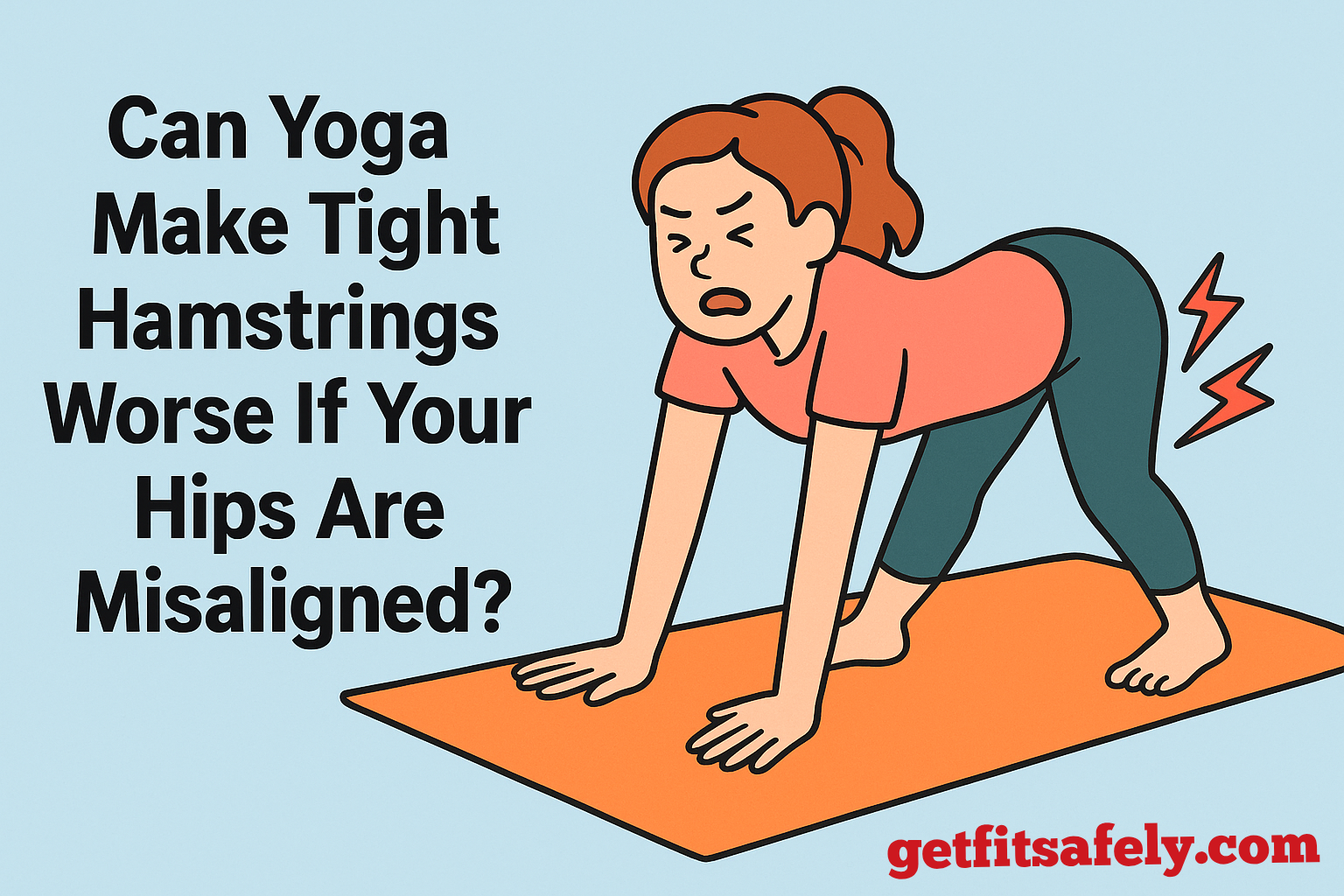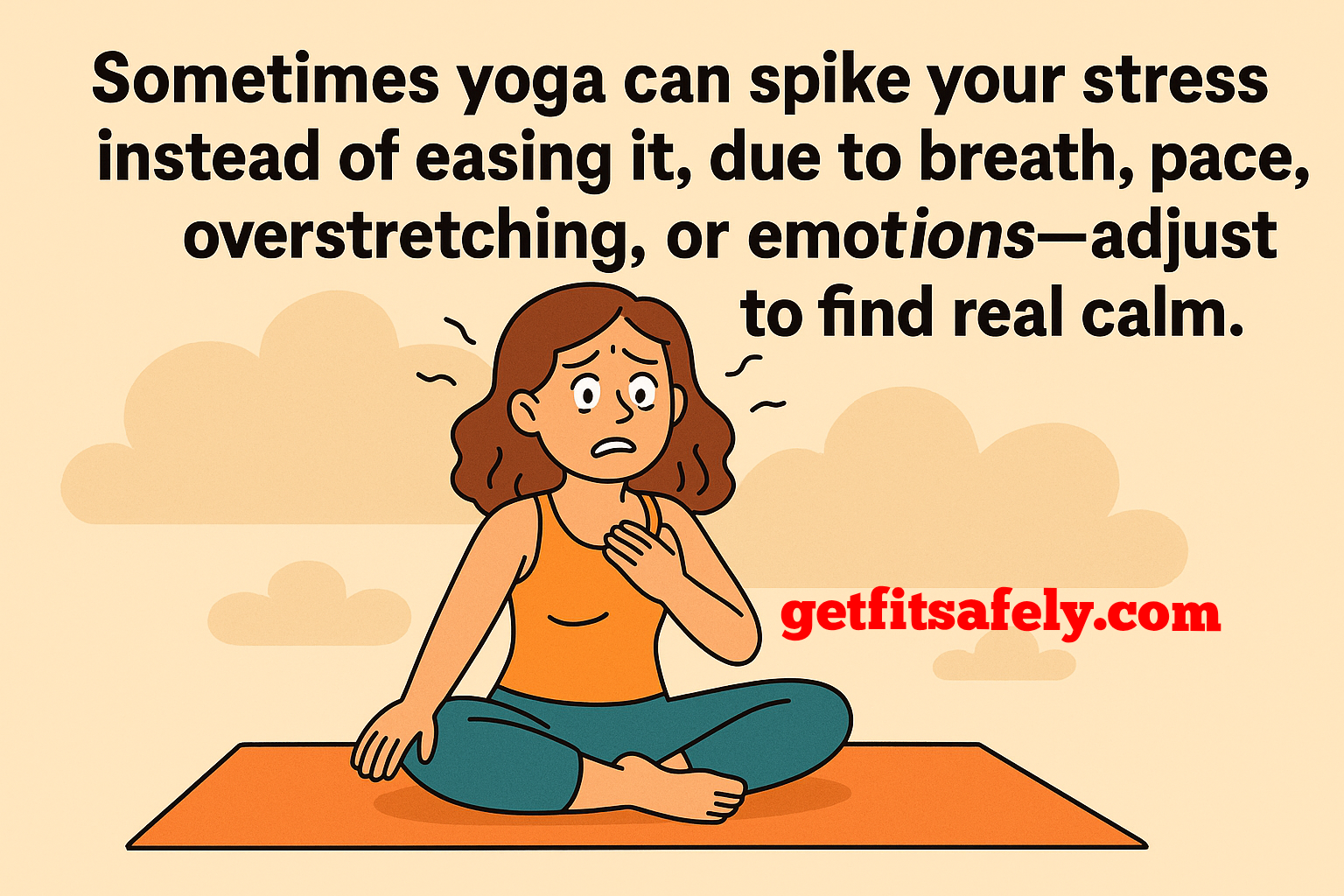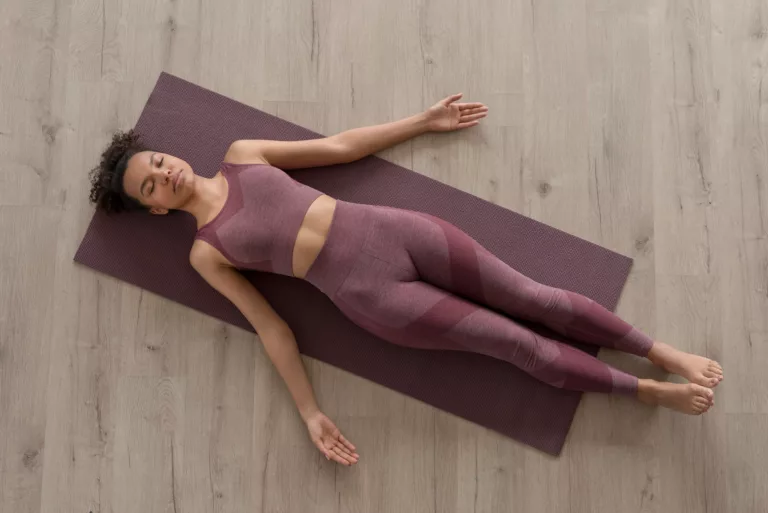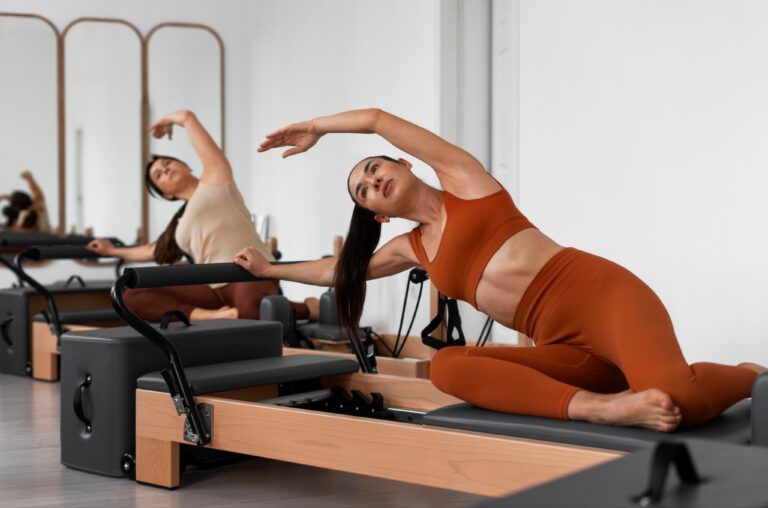Let’s be honest.
Everyone tells you that yoga “opens” the hamstrings.
That after a few weeks of forward folds and wellness-magazine poses you’ll have legs long and soft like a cat in the sun.
But here’s a question few people ask: what if the real problem was never the hamstrings at all?
What if the true cause of the tension sits higher up… right in the hips, which might be slightly crooked?
Because if that’s the case, some yoga poses might not just fail to help you… they could actually make things worse.
Why the hamstrings aren’t always the culprit
For years I also thought I had “genetically” tight hamstrings.
I tried everything: forward folds, cold stretching, yoga sequences on YouTube.
Result? Almost nothing.
Until one day a coach told me: “Stop blaming your hamstrings. Look at your pelvis.”
And a lightbulb went on.
If the pelvis tilts forward, rotates to one side, or is simply unbalanced from years of poor posture, the hamstrings can stay constantly tense.
It’s like having a rubber band already stretched to the max: pulling it more won’t make it more elastic… you just risk snapping it.
So if you don’t fix your hip alignment, continuing to yank on the hamstrings can lock in that chronic tension even more.
When yoga helps… and when it makes things worse
Don’t get me wrong: yoga can be a godsend for hamstrings.
Conscious breathing, controlled movement, and muscular activation are a perfect combo to lengthen and strengthen.
But… there’s a catch.
If the pelvis is off-axis, those same poses may pull even more on one side while the other side barely moves.
Imagine a downward dog done with one hip higher than the other:
- One hamstring lengthens and works.
- The other “relaxes” too much.
- The lower back takes on extra stress.
Over time, this asymmetry sets in even deeper.
How misaligned hips sneak into your practice
The problem is a misaligned pelvis doesn’t send alerts.
There’s no “beep” every time you sit the wrong way.
But daily habits carve a groove over time:
- Always standing with your weight on one leg.
- Carrying your bag or backpack on the same side.
- Climbing stairs always starting with the same leg.
- Hours and hours seated with legs crossed the same way.
Add an old injury or two and there you have it: your hamstrings aren’t “naturally” short, they’re prisoners of an unbalanced posture.
And if you enter poses like seated forward fold, wide-leg forward fold, or pyramid without correcting this asymmetry, you reinforce exactly what’s limiting you.
How to tell if it’s a hip issue and not just hamstrings
You don’t need to run to a physical therapist right away (though if you have pain, it’s recommended).
You can do a few simple tests:
- Mirror test: stand barefoot in front of a mirror. Does one hip look higher?
- Knee-to-chest test: lie down and bring one knee to your chest. Does one side move much more easily?
- Forward fold: do you feel more pull on one side of the back or behind one thigh?
If the answers are “yes” to more than one, your hamstrings are probably under tension because the pelvis is off balance.
How to modify your practice to actually help
The good news: you don’t have to quit yoga.
In fact, it can become your rebalancing therapy if you add a few tweaks:
- Add more balanced hip-openers (lizard pose, half happy baby, pigeon—but gentle and controlled).
- Use blocks to level your posture in folds and lunges.
- Activate, don’t hang: in forward folds, always keep a micro-bend in the knees and think about lengthening the spine, not “yanking” the hamstrings at all costs.
- Work isometrically: lightly contracting the hamstrings while in a lengthened position can help them “feel safe” and release tension.
The mindset shift that unlocked everything
I stopped thinking of my hamstrings as “tight” and started seeing them as “protective.”
They weren’t against me: they were helping me maintain stability when my hips weren’t doing it.
Once I straightened and stabilized my pelvis—both on the mat and off—the improvement was obvious.
Those forward folds that once felt like torture became smooth.
I was no longer fighting my body, but collaborating with it.
A pinch of science: biomechanics, posterior chain, and pelvic alignment
The role of the glutes and pelvic control
An exploratory study monitored muscle activation (EMG) while healthy people voluntarily corrected pelvic tilt.
The main player? The gluteus maximus.
It showed the strongest correlation with pelvic movement and was active in almost all the “adjustment” patterns observed (pmc.ncbi.nlm.nih.gov).
Posterior chain and stability
Correcting pelvic alignment isn’t about aesthetics: it improves biomechanical efficiency, hip extension, and reduces over-reliance on the hamstrings to stabilize posture.
This works as an antidote against injury risk in the posterior chain (researchgate.net).
Anterior pelvic tilt and hamstring tension
In dynamic contexts like running and sprinting, an anterior pelvic tilt (APT) can lengthen and stress the hamstrings, increasing injury risk.
In particular, the biceps femoris, connected to the pelvis, experiences greater traction (sportsmith.co).
What happens to the hamstrings when the pelvis is off: the “easy technical” version
When the pelvis tilts forward (anterior tilt), the hamstrings are already lengthened even at rest.
That means if you “pull” them more with intense stretching, you risk irritating the tendons and increasing reflex stiffness.
If the pelvis tilts backward (posterior tilt), the hamstrings are shortened and overactive: in this case, the tension you feel is more like a “block” than a lack of flexibility.
Understanding this difference is crucial: in one case you need to stabilize and strengthen, in the other you need to lengthen gradually and rebalance posture.
Indirect signals that point to hip misalignment
Your body doesn’t always warn you with pain or stiffness in the area in question.
Sometimes the problem shows up elsewhere:
- Unexplained lower-back pain or stiffness after yoga.
- Noticeable strength difference between right and left leg in lunges.
- A sense that one leg is “longer” or heavier than the other.
- More shoe wear on one side.
These small clues, added together, can tell you much more than a single test.
“Pre-activation” strategy before yoga
If you want to keep your hamstrings from “taking the hit” during practice, spend 3–5 minutes on targeted activation before you start:
- Slow glute bridge to stabilize the pelvis.
- Supine single-leg raise to wake up the hip flexors.
- Small static lunges, focusing on left-right symmetry.
These drills “bring back online” the muscles that support alignment and reduce the risk of reinforcing an unbalanced pattern.
How to bring the correction off the mat too
Yoga lasts an hour, but your hips hold a position 24/7.
Here are two daily tweaks that make a real difference:
- Sit symmetrically: avoid always crossing the same leg or twisting your torso toward the monitor.
- Distribute the load: if you carry bags or a backpack, alternate sides whenever you can.
Consistency off the mat is what lets the on-mat corrections stick over time.
How to “feel” your hips before you start
Sometimes your body speaks in subtle sensations that—if you learn to notice them—can save you weeks of extra tension.
Before you even unroll the mat, try this:
- Stand with eyes closed for 20 seconds and notice if your weight shifts more to one foot.
- Walk a few steps and feel if one hip “hikes” more or moves through a bigger arc.
- Slowly rotate your torso: do you feel one side pulling more in the low back?
This mini awareness check can become a useful ritual to guide how you adapt the session.
Yoga poses to modify if the pelvis is off
Not all poses are “neutral” when the hips aren’t working in sync.
These are the trickiest—and how to adapt them:
- Standing forward fold → keep knees slightly bent and focus on lengthening the spine.
- Downward dog → work with heels higher and slightly shift the pelvis toward the less dominant side.
- Pyramid → shorten your stance to reduce excessive traction on one side.
Three micro-adjustments that make a difference
Even small tweaks can completely change how your hamstrings feel:
- Blocks under your hands to keep symmetry in forward folds.
- Weight split 50/50 between legs in lunges, using a mirror to check.
- Light glute activation before every fold to stabilize the pelvis.
Conclusion
Yoga isn’t the enemy, but it’s not a magic wand either.
If the hips are misaligned, chasing only “deeper stretches” can keep the hamstrings on high alert.
Fix the foundation first—the alignment of the pelvis—and then you’ll see flexibility arrive as a natural consequence.
The body loves balance: when you give it that, mobility, comfort, and performance unlock.
Next time you roll out the mat, think less about touching your toes and more about setting your hips in order.
Your hamstrings will thank you.




